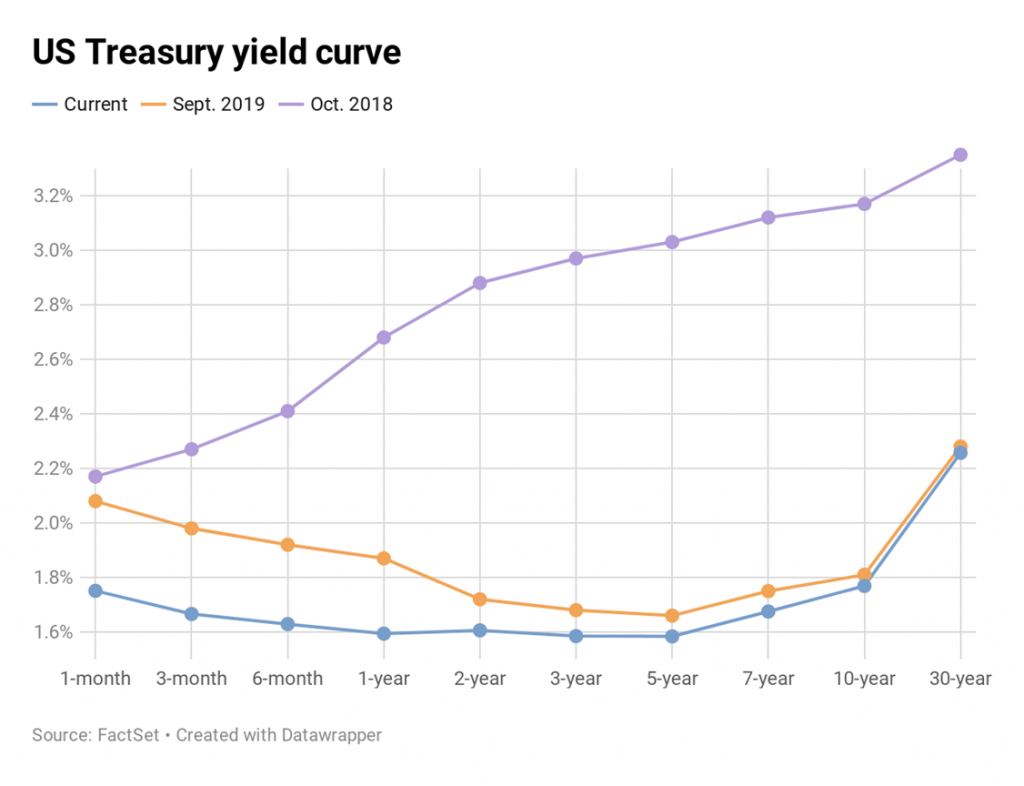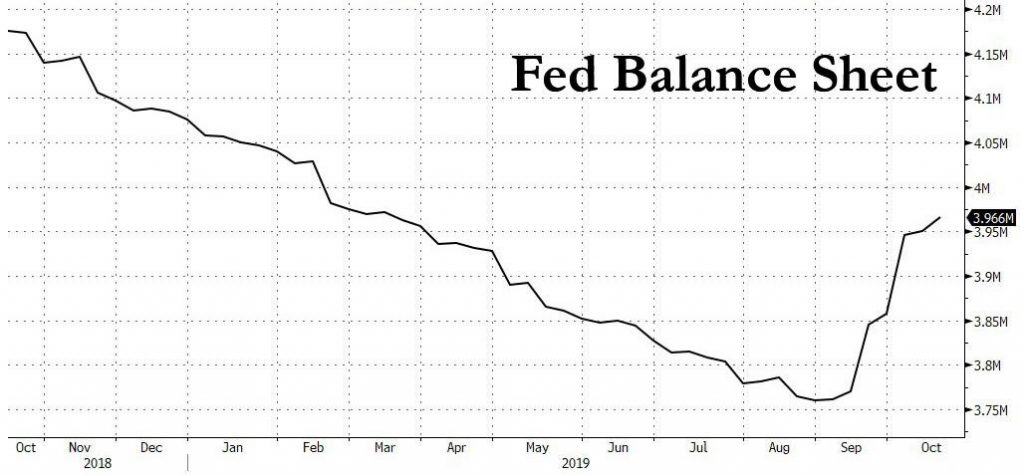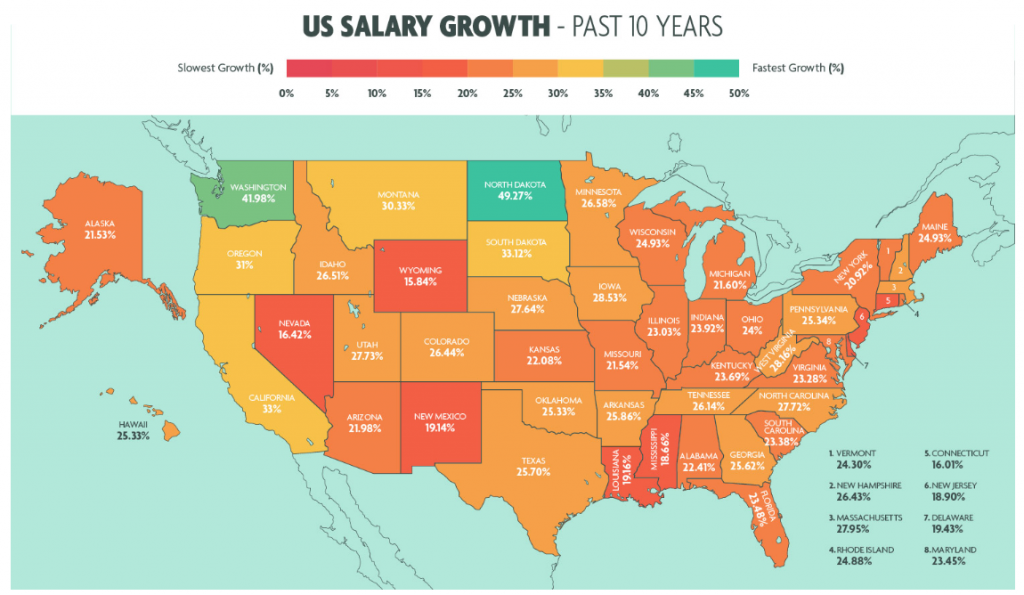1. Housing and Recessions
by Calculated Risk on 10/15/2019 11:32:00 AM
Now that new
home sales have reached a new cycle high (in June), I’d like to update a couple
of graphs in a previous post (most of this from an earlier post).
For the economy, what we should be focused on are single family starts
and new home sales. As I noted in Investment and Recessions “New Home
Sales appears to be an excellent leading indicator, and currently new home
sales (and housing starts) are up solidly year-over-year, and this suggests
there is no recession in sight.”
For the bottoms and troughs for key housing activity, here is a graph of Single
family housing starts, New Home Sales, and Residential Investment (RI) as a
percent of GDP.
Read more at https://www.calculatedriskblog.com/2019/10/housing-and-recessions.html#rqPIhycXiXK7Bvcy.99

2.The End of Mutual Funds Put On Hold….More Mutual Funds Launched Last Year Than ETFs.
Not so fast. Mutual funds in the U.S. remain a monolithic presence: They had $19.93 trillion in assets under management as of Aug. 31, versus $19.49 trillion a year earlier, suggesting that any shrinkage will come glacially.
In fact, more mutual funds were launched last year (345) than ETFs (247), according to the Investment Company Institute, a fund-advocacy group. And mutual-fund cash flows were a positive $10.4 billion through the first half of this year, versus a negative $30.1 billion in the 2018 first half, though the market’s tumult in August turned that flow negative.

ETFs Get All the Buzz, but Mutual Funds Still Dominate. There’s a Reason.- By
Nick Ravo
With $19.87 trillion in assets under management as of June 30, mutual funds are expected to remain a force despite the surging popularity of ETFs
3.Yield Curve Un-Inverted.
But an un-inverted yield curve isn’t necessarily a reason to celebrate, either, Martin Enlund and Andreas Larsen of Nordea Markets told clients in a note published Friday.
“While a steeper curve may be regarded as reflationary (growth returning, inflation picking up etc), steepening can also be a worrisome sign,” the two strategists wrote. “Looking at the inversions of the US curve since 1978, a re-steepening (un-inverting) of the curve seems to occur during (1980, 1981) or preceding US recessions (1990, 2001, 2007).”
“Indeed, over the past 40 years, only during the successful precautionary rate cuts in 1998 did a re-steepened yield curve not constitute a worrisome sign,” Enlund and Larsen wrote in their Friday note.

To be sure, while recessions are almost always preceded by a steepening of the yield curve, not every instance of yield curve steepening leads to an economic downturn.
The recent rise in the 10-year Treasury yield could also be explained by an improved outlook in real GDP, Leslie Falconio, UBS Global Wealth Management senior strategist, said in a note earlier this week.
“It may be too soon to make the call that the yield curve is now on a path toward steepening. However, there is no question that the recent progress in the US/China trade talks have pushed US 10-year yields higher,” she wrote.
Other economists have suggested that the possibility of a Brexit deal between the United Kingdom and the European Union has bolstered the global GDP outlook.
Still, while Falconio conceded that the Fed’s recent purchases of U.S. bills has steepened the curve, she did not go so far as to tie its buying to a belief in a forthcoming recession.
“The shape of the curve continues to remain on the radar of the Fed,” she wrote. “One reason for them to buy short end Treasuries versus an even dispersion along the maturity spectrum, is to influence the shape of the curve.”
But whether the Fed’s recent cuts and bond purchases reflect mere tweaks to an otherwise healthier economy as Falconio might suggest or a safeguard from something more sinister as described by Gundlach remains to be seen.
The yield curve recession indicator is righting itself, but that
doesn’t mean we’re in the clear
https://www.cnbc.com/2019/10/19/why-the-yield-curves-steepening-may-not-actually-be-a-good-sign.html
4.FED Boosted Balance Sheet by $200B in One Month.
It is this same “not QE” that has boosted the Fed’s balance sheet by $200BN in one month, the fastest rate of increase since the financial crisis.

Here Is The Real Reason The Fed Restarted QE
by Tyler Durden
https://www.zerohedge.com/markets/here-real-reason-fed-restarted-qe
5.Stocks Are At A Key Point Measuring The Success of Rate Cuts.
Guggenheim

6.Private Equity on Track for Record “Add Ons”
Key Highlights:
• Nearly 30% of PE-backed companies
now undertake at least one add-on acquisition, compared to less than 20% that
did so in the early 2000s.
• Heightened add-on activity in recent years is largely being driven by
prolific buyers that pursue numerous add-ons per platform. More than 25% of
add-ons are now being acquired by platforms with at least five total add-on
deals.
• It takes time to execute deals and integrate businesses; as such, the median
time to exit tends to be about a year longer for companies that undergo at
least one add-on.
https://pitchbook.com/news/reports/2q-2018-pitchbook-analyst-note-additive-dealmaking

https://pitchbook.com/news/articles/this-year-could-set-another-record-for-us-pe-add-on-activity
7.States With Highest and Lowest Salaries.
A new study, from Comparisun, has analysed the latest Bureau of Labor Statistics data, to reveal the states with the highest, and lowest, average salaries. Along with the average salary increase in the last 10 years (2008 – 2018), state by state.
North Dakota, Washington, South Dakota, California and Oregon are the five states with the largest salary increases over the last decade.
- North Dakota – 49.27%
- Washington – 41.98%
- South Dakota – 33.12%
- California – 33.00%
- Oregon – 31.00%
In Wyoming, Connecticut, Nevada, Mississippi and New Jersey, increases haven’t peaked over 19%.
- New Jersey – 18.90%
- Mississippi – 18.66%
- Nevada – 16.42%
- Connecticut – 16.01%
- Wyoming – 15.84%

The US Earnings Index 2019 – Which State’s Salary Increases The Most? POSTED BY: JACOB WOLINSKY 3 DAYS AGO
8.Almost 2000 Satellites are Orbiting Earth with Plenty More Coming.
More than 1,950 active
satellites are currently orbiting Earth, and plenty more could soon be joining
them.
Reduced costs and growing competition has seen an increasing number of
commercial satellites reaching Earth’s orbit, which – unlike national space
programmes – don’t recognize national boundaries.
While some countries continue to view space through a military lens,
collaborations such as the International Space Station have brought nations
together to push the boundaries of knowledge about the universe.
This spirit of cooperation is also giving rise to a new breed of entrepreneur keen to exploit the untapped potential of the burgeoning space sector.
The new space race
Ambitious
private endeavours in development include space mining operations, and
programmes allowing fee-paying tourists to experience going beyond Earth’s
atmosphere.
Business is also booming for the growing number of private firms offering
satellite launch capabilities to private clients and national governments. This
has helped the spread of satellite technology to less wealthy countries without
space programmes of their own.
The UCS Satellite Database,
compiled by the Union of Concerned Scientists, a nonprofit science advocacy
group, shows that the United States, as of November 2018, had 830 registered
units in orbit. That number almost exceeds the combined total of the rest of
the top ten. China follows with 280, and Russia is third with 147.

9.Scientists fuse brains with AI implants to ‘give people superhuman intelligence’
Brain-boosting electrodes will soon become “like plastic surgery” as all we race to get cybernetic enhancements
Humans will be turned into cyborgs — with scientists sticking AI implants deep into their brains.
Brain-zapping electrodes have treated seizure patients with promising results, and bizarre and unexpected side-effects of calmness and positivity means they are now being probed as a radical treatment for depression.
It’s even theorised that the electric implants can be manipulated to make users max out their brain power — similarly to how amphetamines like Adderall are abused today.
Science power couple Kelly and Zach Weinersmith explored the exciting advancements in their brand new book “Soonish – Ten Emerging Technologies That’ll Improve And/Or Ruin Everything”.
The pair reckon that brain-boosting electrodes will soon become “like plastic surgery” — with people spending shedloads in order to become smarter and stay ahead of the pack.
READ MORE

Humans might even share thoughts in a giant AI hive mind (Image: Getty Images)
One in four top academics currently abuses amphetamines, according to the Weinersmiths.
“As brain-computer interface technology becomes more reliable, it may have implications in many industries,” they wrote.
“An ideal brain-computer interface can make you smarter, better at remembering things, more focused, and perhaps even more creative.
“You can’t think about the possibilities without the possibilities without picturing some sort of cyborg diaspora and yet given the opportunity to suddenly have a better memory, we’d probably all take it.”
Even weirder is the possibility of a human hive mind — we will be able to share each other’s thoughts like an army of ants working in unison.
Lab rats had their brains linked via a brain-computer interface in one set of experiments.
“The results do appear to be a sort of brain-to-brain connection,” the Weinersmiths said.
“We don’t know whether these lab rats were literally sharing thoughts, but their connected brains seem to get together and work together more efficiently.
“At some point in the future, it may become possible to literally combine minds with other people, either for recreational or business purposes.
https://www.dailystar.co.uk/news/latest-news/scientists-fuse-brains-ai-implants-20650662
10.7 Traits of A Leader Worth Following
They give others the space to fail forward and grow into their potential

Michael Thompsonf
Follow
Sep 16 · 4 min read
Photo by Markus Spiske on Unsplash
When I started my first job my dad gave me an extremely valuable gift: the leadership notes he had logged over the course of his 50-year military career, during which time he managed organizations and trained today’s leaders. These notes served him and his students well. Years later, they’ve done the same for me and my clients.
The circumstances differ from my dad’s. However, the leadership lessons laid out in his notes transcend the military and are just as relevant to entrepreneurs, and anyone who leads, as to military personnel.
His notes run deep. However, over the years I’ve studied them in order to find consistencies. Below are 7 of the traits that show up time and time again when it comes to being a leader worth following.
1. Be precise in all forms of communication
The best leaders are often great simplifiers. They’ve learned that people have far more to do, read, and listen to, than time in the day. As a result, they’ve taken great strides to learn how to take complex ideas and arguments and distill them down into simple language.
One way to practice this is by reducing a full-page memo to half a page and then getting the message down to the size of a notecard. When it comes to communication one hundred well-focused words beat a thousand every time.
2. Give others room to grow into their potential
Collaboration, innovation, and creative thinking all hinge on one word: trust. Great leaders embrace the logic of General George Patton: “Never tell people how to do things. Tell them what to do and let them surprise you with their ingenuity.”
Stepping aside once directions are given and providing team members with space to explore isn’t easy. However, empowering others is always the right thing to do. It not only creates growth opportunities for individuals and builds confidence as a team. It also ensures the leader’s legacy is preserved because their team will be more motivated than ever to finish what was started, with or without them.
3. Own up to your mistakes and move forward
We all make mistakes. However, upon making one, a leader worth following accepts the blame, apologizes, buries the worry, and then they put all of their energy into their next objective.
They do this because experience has taught them that the biggest impediment to progress is allowing themselves to get stuck in the past. For this reason, the best leaders only focus on the present facts and refrain from getting caught up in finished actions that lay outside of their control.
4. Ruthlessly seek out blindspots
Leadership is a constant work in progress. One of the ways strong leaders continually push forward is by opening themselves up to criticism and surrounding themselves with others who challenge their way of thinking.
What do you think? Where did I go wrong? How can we get it right the next time? Great leaders ask these questions and listen attentively to a variety of opinions in order to learn about different perspectives and better identify things they may have missed.
5. Reprimand in private and praise in public
No one is immune to failure, and great leaders know that publicly shaming a fellow team member when things go south, serves no one. In fact, experience has taught them that oftentimes it can do more damage than the initial misstep.
On the flipside when things are going well, great leaders recognize that personal gain and attention jeopardizes not only trust but also bigger picture goals. So instead of seeking the spotlight, they cast the light onto team members who could use the boost.
6. Contain your fears and learn from them
Like most people, great leaders are not immune to fears of the unknown. The difference is that they consciously and consistently work towards controlling and learning from them.
Changing the world isn’t easy. It takes guts. Great leaders, despite being scared like the rest of us, embrace the importance of Andrew Jackson’s words: “One man with courage makes a majority.” As a result, instead of succumbing to their environment, great leaders take the reigns and proactively create the change they seek to make.
7. Reserve time for self-reflection
You cannot be an effective leader is you aren’t taking the daily steps to become more self-aware. When it comes to improving in this area one exercise shows up repeatedly when studying history’s greatest leaders: journaling.
What went well today? What didn’t? What did I learn? How can I improve? On a daily basis, great leaders ask themselves these questions and put their thoughts down on paper to ensure their mistakes today are not repeated tomorrow.
Every time I read back over my dad’s notes I feel an extreme sense of pride. He not only had the discipline to take notes on how to become a better leader, but he also embodies the principles above.
He reserves time for self-reflection and learns from not only his mistakes but also from those who came before him. He forgives himself and others easily while treating each day as a learning opportunity.
But most of all, my dad is trustworthy. There have been times when our relationship has been difficult. But no matter our disagreements I never once doubted that he didn’t have my back.
In the process, he taught me the true definition of leadership: Taking care of your own and giving them the power to one day take care of others.
WRITTEN BY
Michael Thompson
Follow
Co-creator of 2 little boys with my dream girl -career/communication coach seen in Fast Co. INC, Business Insider — say hi @ https://mikethompsonblog.com/